Nokia 4A0-106 Nokia Virtual Private Routed Networks Exam Practice Test
Nokia Virtual Private Routed Networks Questions and Answers
Click the exhibit.
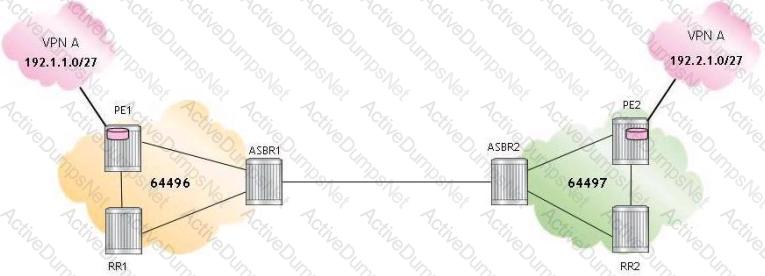
For the inter-AS model C VPRN, which of the following is FALSE when an IP packet is sent from 192.1.1.1 to 192.2.1.1?
Click the exhibit.

Routers RR1 and RR2 are configured as route reflectors. For the inter-AS model C VPRN, which of the following about the BGP sessions established between the routers is TRUE?
Which of the following about the configuration of an inter-AS model C VPRN is FALSE?
Click the exhibit.
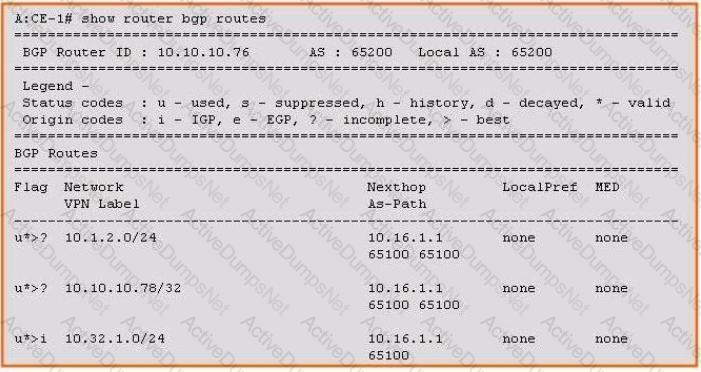
Assuming that the as-override command is used, what is the most likely location of prefix 10.1.2.0/24?
Click the exhibit.
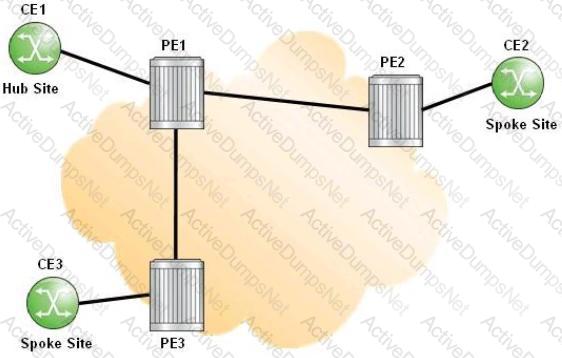
For the CE hub and spoke VPRN, which of the following is FALSE?
Click the exhibit.
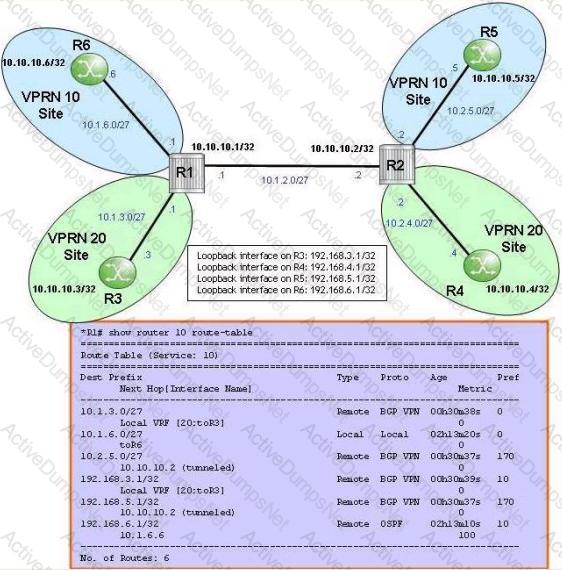
Which VPRN type produces the output shown on router R1?
Click the exhibit.
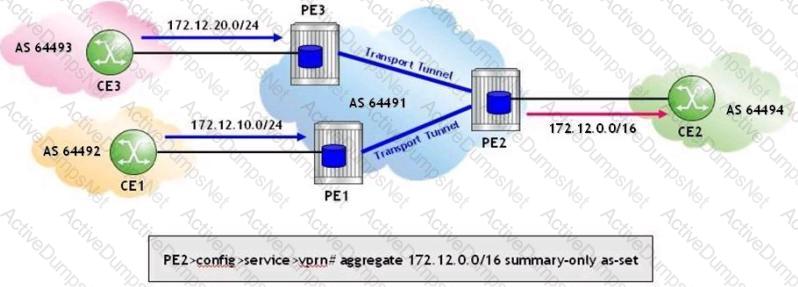
If the displayed command is executed, what is the correct value of AS-Path in the BGP route 172.12.0.0/16 advertised by PE2?
Which of the following about VPRN Outbound Route Filtering (ORF) is FALSE?
Which of the following about a full mesh VPRN design is FALSE?
For a Carrier Supporting Carrier (CSC) VPRN where the customer carrier is an ISP that provides Internet connectivity to its end-customers, which of the following is FALSE?
Click the exhibit.
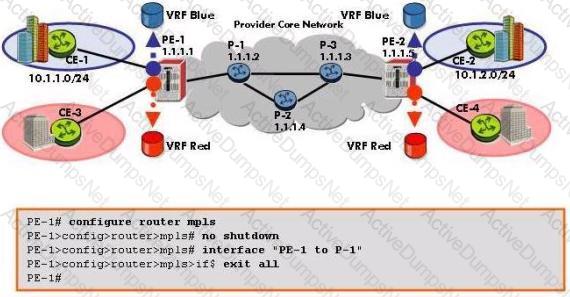
An Nokia 7750 SR is to be configured as a PE router that supports VPRNs using LDP as the transport protocol. Which of the following best describes this configuration?
For the Inter-AS model A VPRN, which of the following is FALSE when CE2 sends an IP packet to 192.168.1.1?
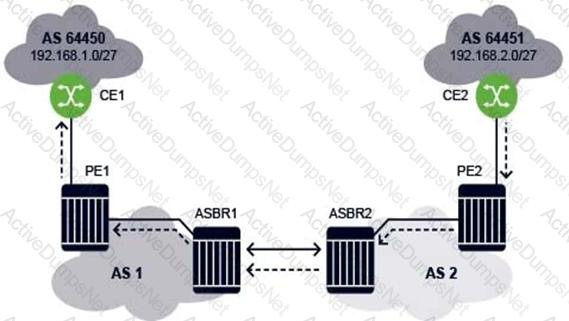
Click the exhibit.

A Carrier Supporting Carrier (CSC) VPRN is configured on an Nokia 7750 SR for a customer carrier who is an Internet Service Provider (ISP). Which of the following configuration steps is NOT required?
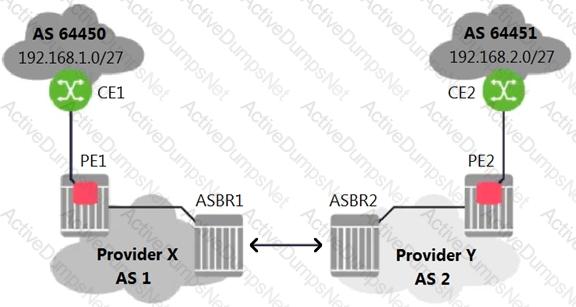
For the inter-AS model B VPRN, which of the following protocols is used to advertise routes between ASBR1 and ASBR2?
Which of the following about scaling techniques for route reflectors is FALSE?
Which of the following VPRN topologies must a customer implement to allow a given VRF to include routes from different VPRNs?
In the output from an Nokia 7750 SR shown below, what does the highlighted text represent?
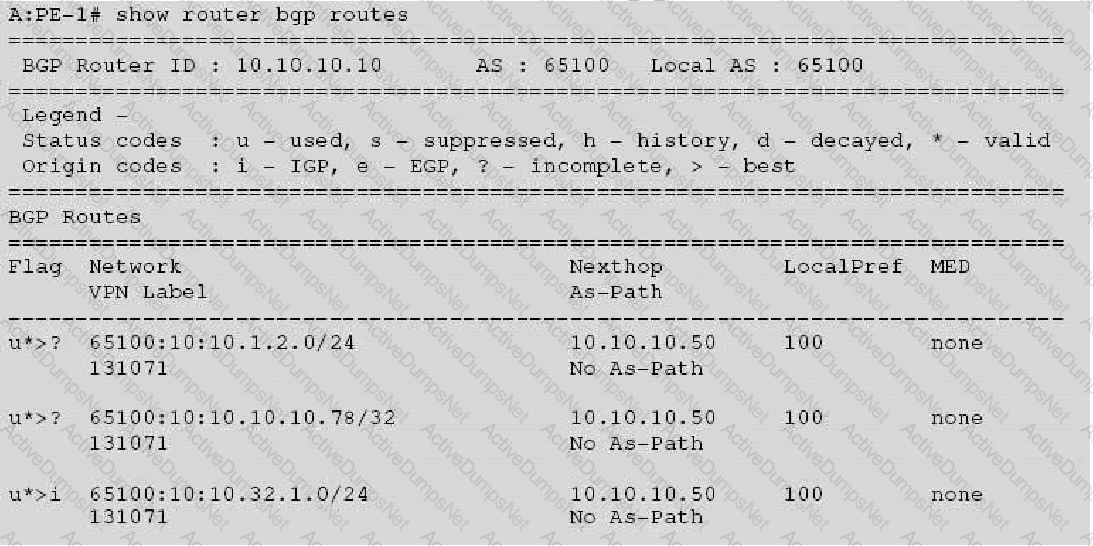
Click the exhibit.
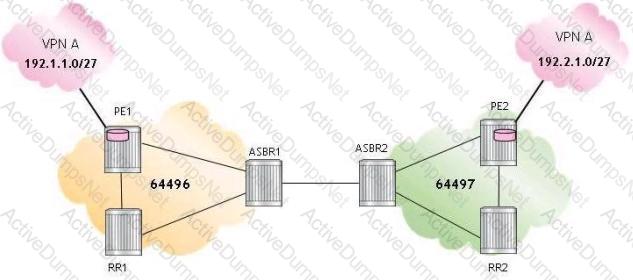
For the inter-AS model C VPRN, which of the following is FALSE when an IP packet is sent from 192.1.1.1 to 192.2.1.1?
Choose the answer that best completes the following sentence. The CE device is typically configured with _________________.
After configuring OSPF as the PE to CE routing protocol for a VPRN service you get the following output from an Nokia 7750 SR: What is most likely wrong with the configuration?
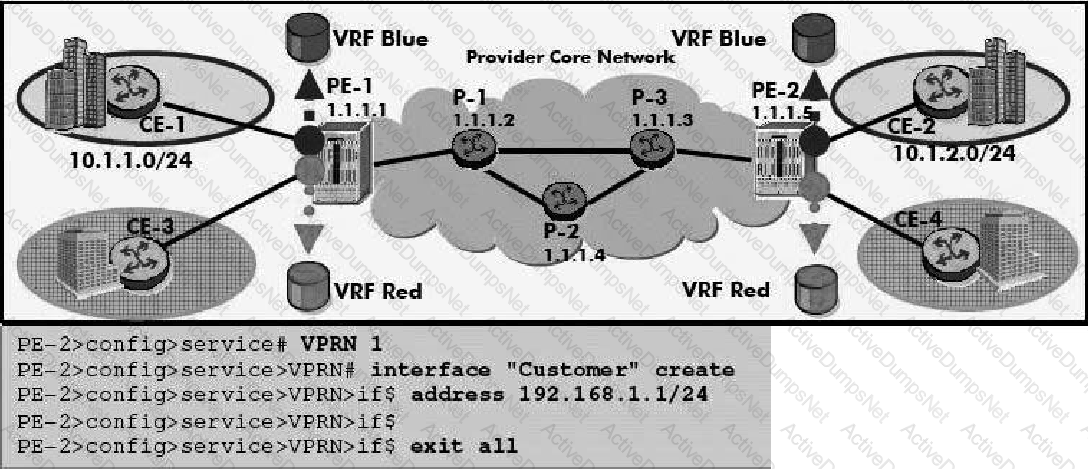
Based on the VPRN BGP decision process, which of the following routes is selected first?
In a VPRN that uses MPLS transport tunnels, which of the following statements about P devices is TRUE?
Which of the following statements are true regarding P devices in an MPLS VPRN? (Choose two.)
Which of the following is not an available option for Route Distinguisher assignment?
Choose the best answer to describe the result of the configuration of an Nokia 7750 SR shown below?
For a Carrier Supporting Carrier (CSC) VPRN where the customer carrier is a BGP/MPLS VPN Service Provider (SP), which of the following is FALSE?
Which of the following describes how a route is handled when is received at the PE from the local CE?
Which command is used to generate the output from an Nokia 7750 SR shown below?

When does a router add a Route Target to a route?
Which command is required in the blank line to complete the configuration shown below on an Nokia 7750 SR?


Which of the following best describes the goal of an Extranet VPRN?
What operation is performed by a P device on the label signaled by MP-BGP when it receives a labeled packet for a VPRN service?
